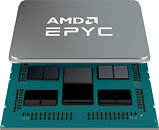BOOX Unveils New Go 7 Series Portable eReaders
BOOX is thrilled to unveil the Go 7 series, the latest addition to its esteemed Go Series. It features Go 7 and Go Color 7 (Gen II), Android-based eReaders with writing capabilities for immersive reading and instant idea capture. Retaining the 7-inch size of the Go Color 7, both models inherit the sleek and minimalist design philosophy of the Go Series, emphasizing simplicity and portability. The BOOX Go 7 is available to order from BOOX (US) and BOOX (EU) for $249.99/£219.99/€249.99 - Amazon to follow. The Go Color 7 Gen II and Tab X are not yet on sale but will be $279.99/£249.99/€279.99 for the Go Color 7 and the Tab X C will be $819.99/£759.99/€819.99
The Go Color 7 (Gen II) features an E Ink Kaleido 3 display, renowned for its true-to-life color display, rendering soft hues at 150 PPI and crisp black-and-white content at 300 PPI. This makes it ideal for comic enthusiasts and readers who enjoy visually rich content. Meanwhile, the Go 7 boasts a Carta 1300 monochrome display with a resolution of 300 PPI, offering sharp text clarity that mimics traditional paper. Both models are equipped with adjustable front lights, ensuring comfortable reading in any lighting condition.
The Go Color 7 (Gen II) features an E Ink Kaleido 3 display, renowned for its true-to-life color display, rendering soft hues at 150 PPI and crisp black-and-white content at 300 PPI. This makes it ideal for comic enthusiasts and readers who enjoy visually rich content. Meanwhile, the Go 7 boasts a Carta 1300 monochrome display with a resolution of 300 PPI, offering sharp text clarity that mimics traditional paper. Both models are equipped with adjustable front lights, ensuring comfortable reading in any lighting condition.















































